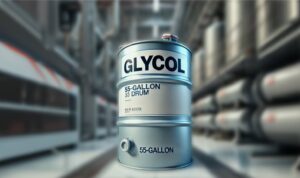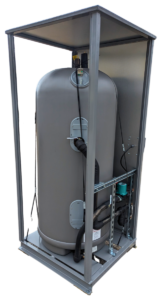Prepare your chiller for cold winter days and nights.
1. Make sure the chiller has the proper mixture of glycol.
Gylcol charts will show your ambient temperature and the amount of glycol (anti-freeze) you will need. To check your glycol levels you will need a refractometer. American Chillers recommends inhibited propylene glycol, specially formulated for HVAC systems, for most of its medium and high temp. chiller applications. Contact us for low temp recommendations.
2. Keep the chiller condenser coils clean and clear of snow and ice.
Ice and snow can damage fan blades and restrict air flow through the condenser – reducing the cooling potential of the chiller.
3. Manually control your head pressures.
Head pressures drop during extremely cold weather and if your chiller isn’t equipped with low ambient controls such as fan cycling or flooded condenser, your chiller may not function properly. One very simple fix, that may be used if the drop in temperature exceeds your head pressure controls is to block the airflow through the condenser by wrapping it with plastic or blocking the condenser intake with a piece of card board. It isn’t a high tech fix, but will work for a temporary solution in unusually low temperatures.
4. Let your pump run.
When the chiller is running, your process most likely provides enough warm water to keep your fluid above freezing or above the glycol freeze levels, but at night or after your process is no longer running, the ambient air temperature can cool down your fluid rapidly. By allowing the pump to run, you will add heat from the pumps and from inside the buildings, plus running water will freeze at lower temperatures than stagnate water.
5. Plan ahead.
The best advice on preparing your chiller for cold weather is to plan ahead. When purchasing your chiller, make sure your chiller is equipped to handle the cold weather conditions for your area. Performing a maintenance check in early September, allows plenty of time to make any corrections necessary for the coming winter months.



